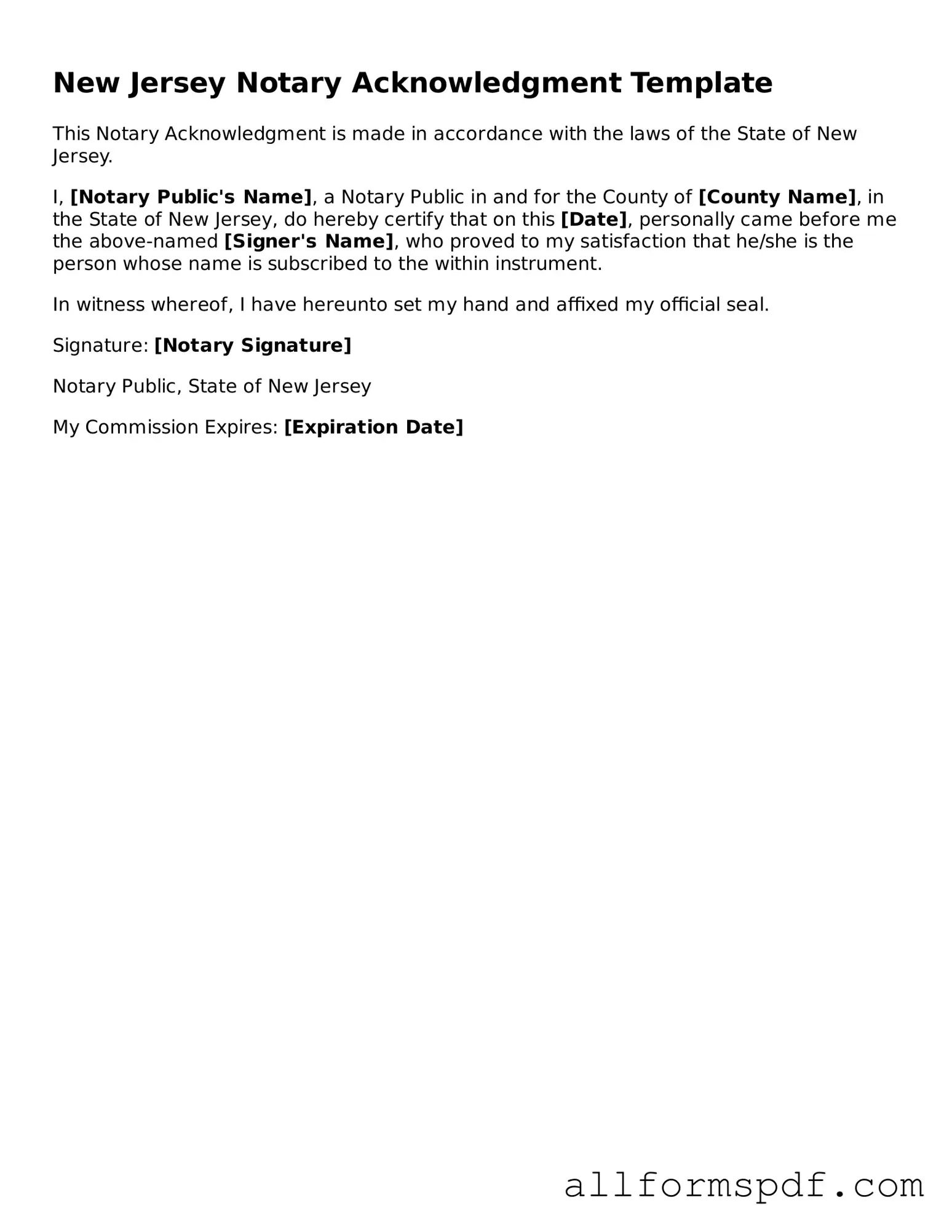Fillable Notary Acknowledgement Form for New Jersey
The New Jersey Notary Acknowledgement form serves as a crucial document that verifies the identity of the signer and their willingness to sign a particular document. This form plays an essential role in ensuring that agreements are executed properly and legally binding. Understanding its significance can help you navigate the notary process with confidence.
Create My Notary Acknowledgement Now
